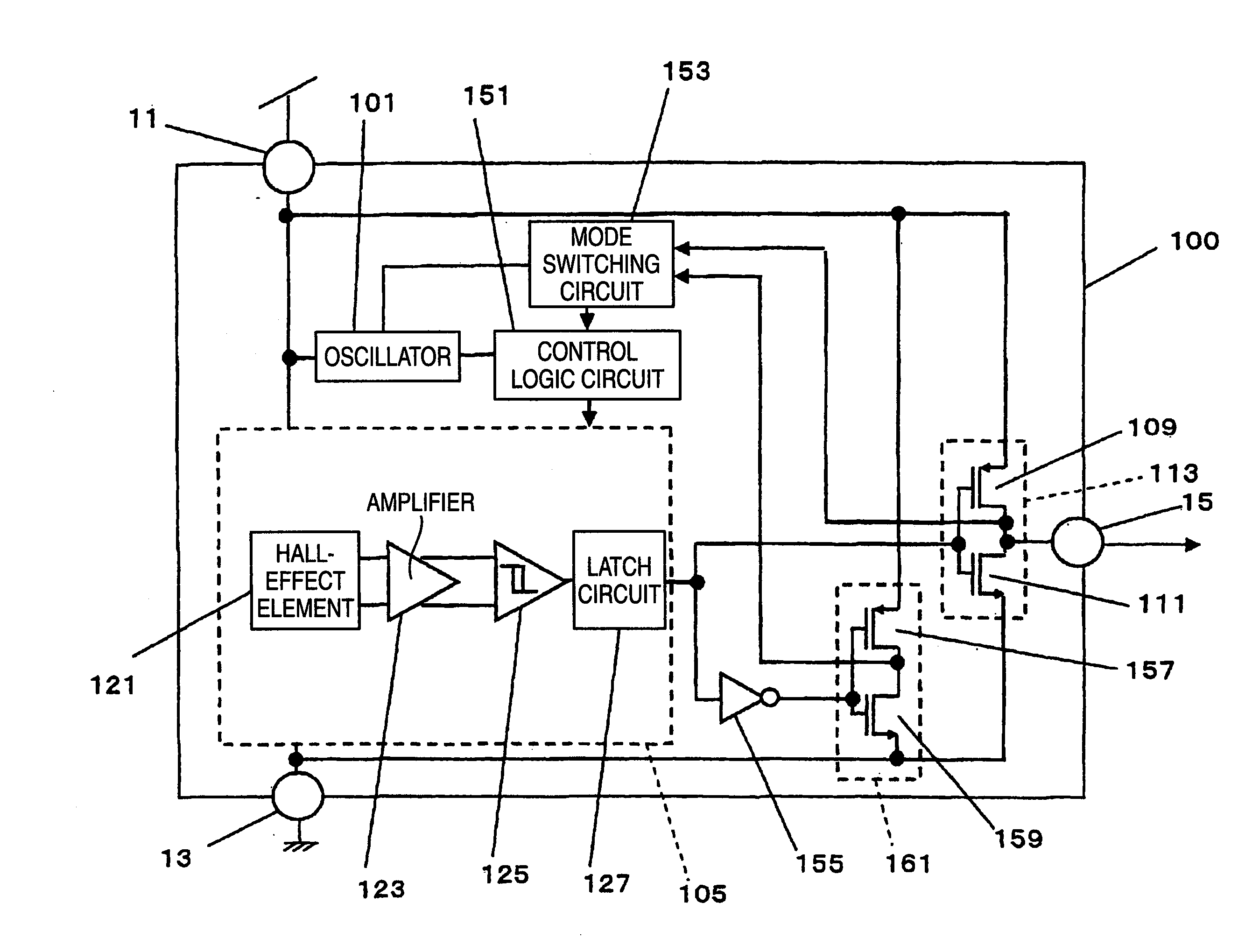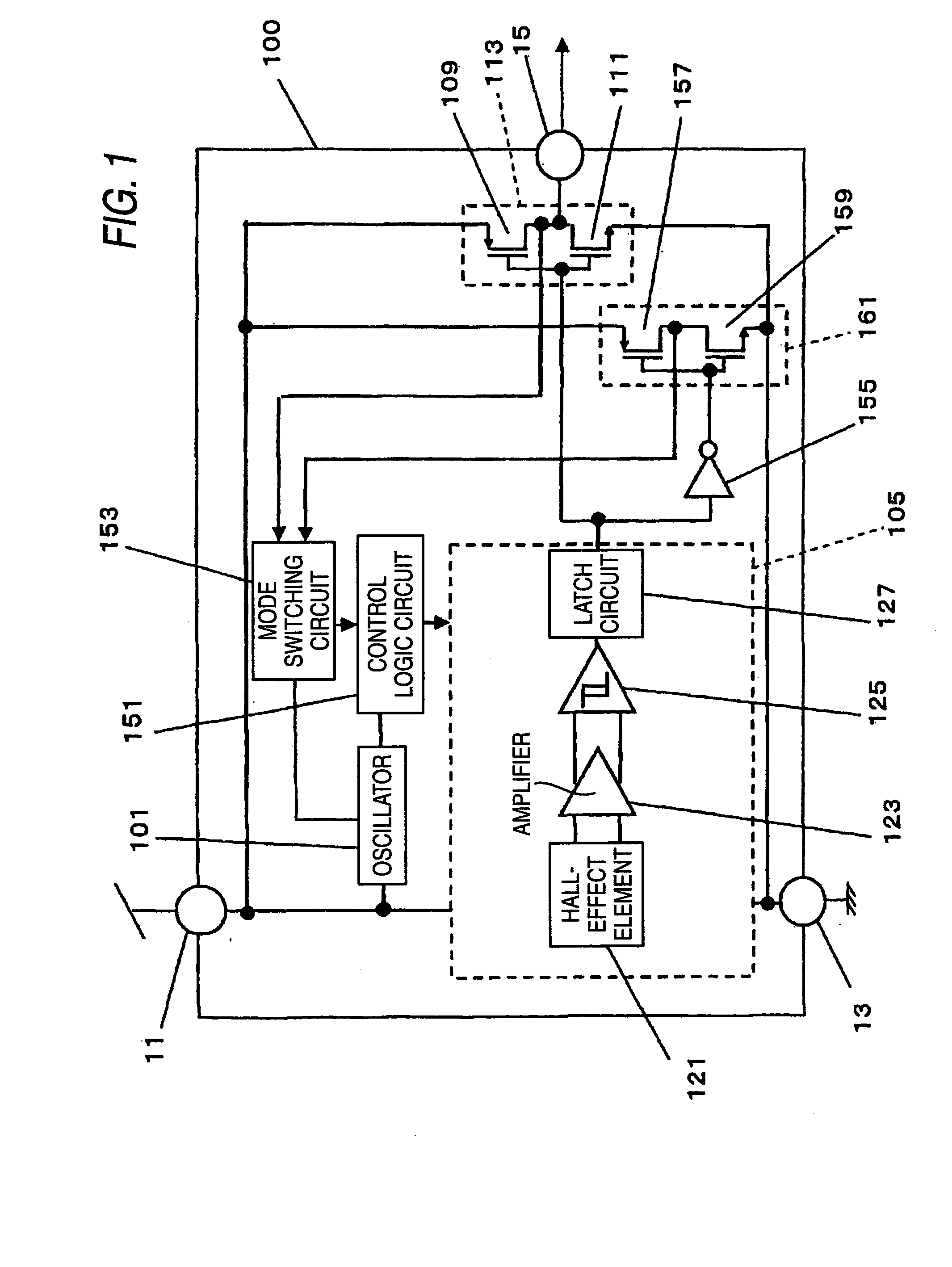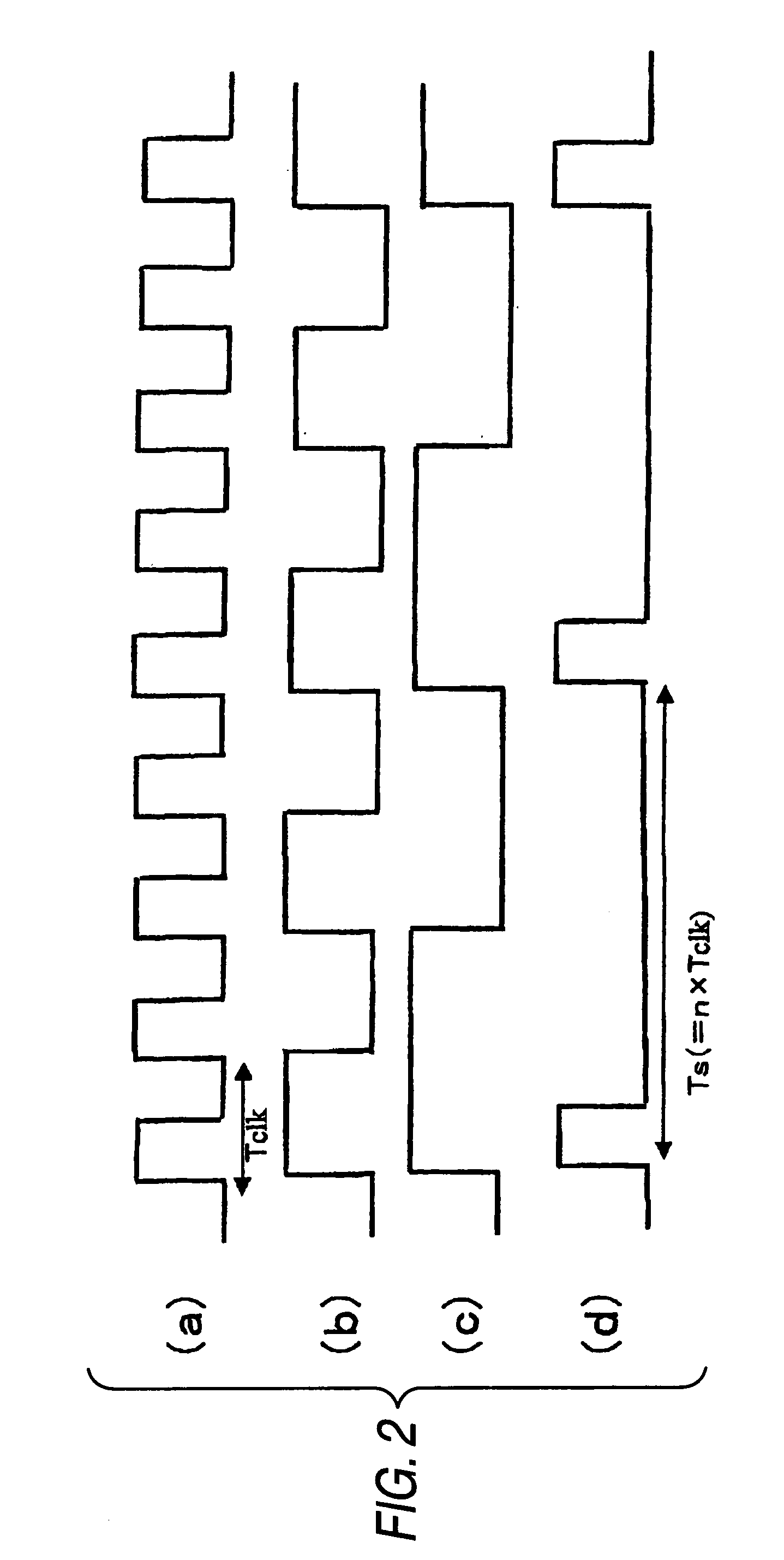Magnetic field detecting apparatus
a magnetic field and detecting device technology, applied in the direction of magnetic measurement, instruments, measurement devices, etc., can solve the problems of very hardly adding and setting test modes, and achieve the effect of performing an investigation within a short time without increasing the chip size and low power consumption of the magnetic field detecting apparatus
- Summary
- Abstract
- Description
- Claims
- Application Information
AI Technical Summary
Benefits of technology
Problems solved by technology
Method used
Image
Examples
first embodiment
Mode
[0050]FIG. 1 is a block diagram for showing a Hall IC 100 according to a first embodiment mode of the present invention. It should also be noted that in FIG. 1, the same reference numerals shown in FIG. 1 have been applied to structural elements similar to those provided in the Hall IC 10 of FIG. 16, which have been described in the Background Art. As indicated in FIG. 1, the Hall IC 100 of the first embodiment mode is equipped with a power supply terminal 11, a GND terminal 13, an output terminal 15, an oscillator 101, a control logic circuit 151, a magnetic field detecting circuit 105, a mode switching circuit 153, an output inverter circuit 113, an inverter 155, and another output inverter unit 161. In the output inverter circuit 113, an NMOS 109 and a PMOS 111 have been series-connected to each other. In the output inverter circuit 161, an NMOS 157 and a PMOS 159 have been series-connected to each other.
[0051]A gate of the NMOS 109 and a gate of the PMOS 111 have been common...
second embodiment
Mode
[0080]FIG. 11 is a block diagram for showing a Hall IC 200 according to a second embodiment mode of the present invention. The Hall IC 200 of the second embodiment mode has the below-mentioned different points, as compared with those of the Hall IC 100 of the first embodiment mode: That is, the Hall IC 200 is equipped with an output terminal connected to the common drain of the output inverter circuit 161; the Hall IC 200 is not provided with the above-described inverter 155; and a magnetic field detecting circuit 205 separately outputs a Hall voltage (will be referred to as “S-pole Hall voltage” hereinafter) in response to magnetic flux density (otherwise magnetic field) of an S pole, and another Hall voltage (will be referred to as “N-pole Hall voltage” hereinafter) in response to magnetic flux density (otherwise magnetic field) of an N pole, the S-pole Hall voltage is applied to the common gate of the output inverter circuit 113, and also, the N-pole Hall voltage is applied t...
third embodiment
Mode
[0086]FIG. 14 is a block diagram for showing a Hall IC 300 according to a third embodiment mode of the present invention. As indicated in FIG. 14, similar to the first embodiment mode, the Hall IC 300 of the third embodiment mode is equipped with a power supply terminal 11, a GND terminal 13, an output terminal 15, an oscillator 101, a control logic circuit 151, a magnetic field detecting circuit 105, an output inverter circuit 113, a mode switching circuit 353, and a reference voltage generating unit 301. The Hall IC 300 of the third embodiment mode is not equipped with the above-described inverter 155, but also, the mode switching circuit 353 has not been connected to the common drain of the output inverter circuit 113.
[0087]FIG. 15 is a circuit diagram for showing the mode switching circuit 353 provided in the Hall IC 300 of the third embodiment mode. As indicated in FIG. 15, the mode switching circuit 353 of this third embodiment mode contains resistors 401 and 402, and a co...
PUM
 Login to View More
Login to View More Abstract
Description
Claims
Application Information
 Login to View More
Login to View More - R&D
- Intellectual Property
- Life Sciences
- Materials
- Tech Scout
- Unparalleled Data Quality
- Higher Quality Content
- 60% Fewer Hallucinations
Browse by: Latest US Patents, China's latest patents, Technical Efficacy Thesaurus, Application Domain, Technology Topic, Popular Technical Reports.
© 2025 PatSnap. All rights reserved.Legal|Privacy policy|Modern Slavery Act Transparency Statement|Sitemap|About US| Contact US: help@patsnap.com



